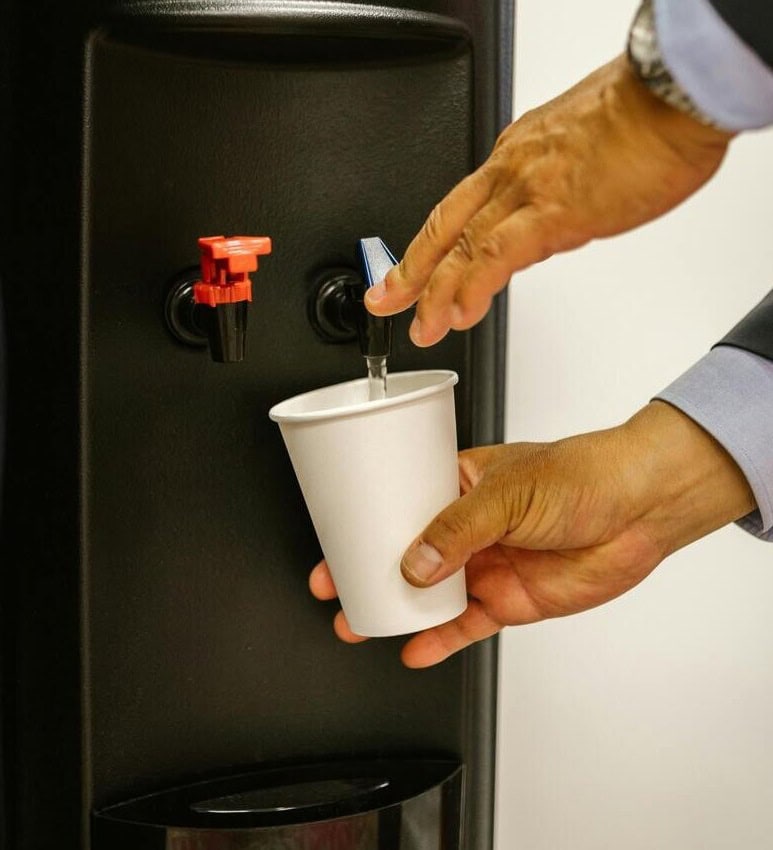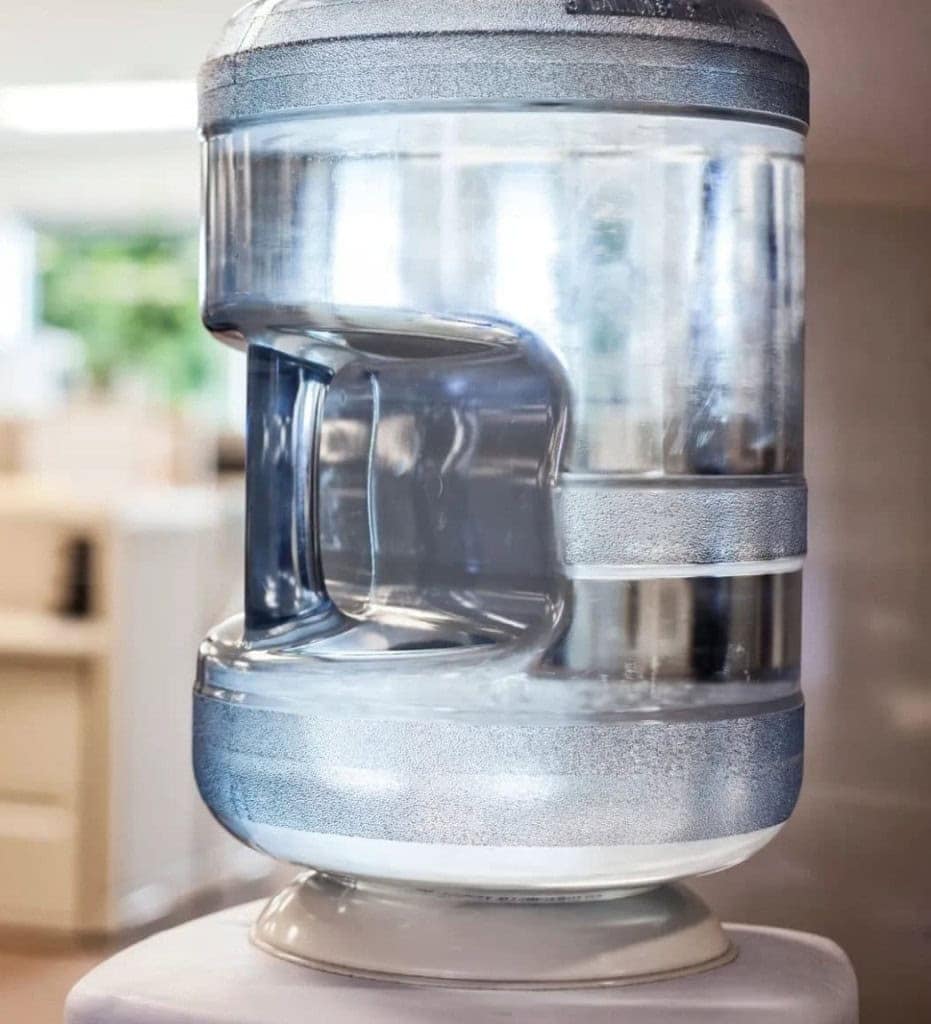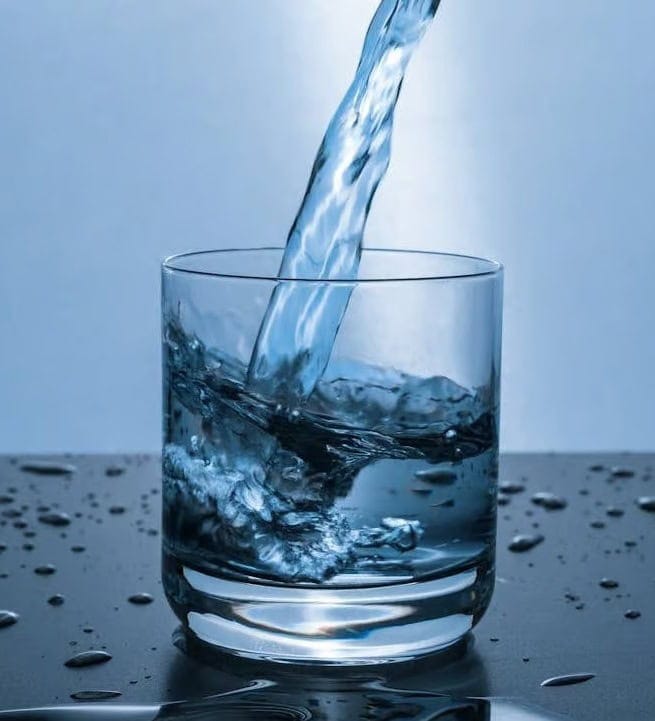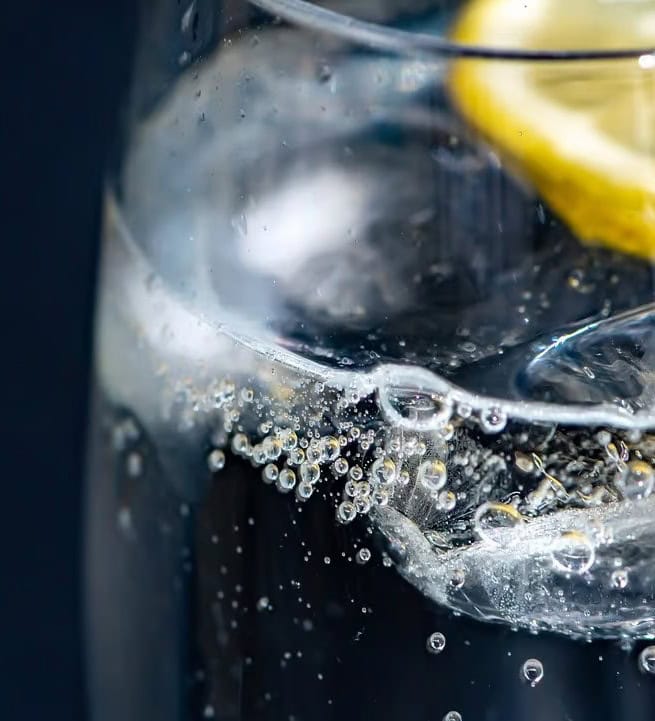When you install a water cooler in your office or workplace, you’re making a smart choice for hydration. But like any appliance that handles drinking water, proper safety protocols matter.
Whether you’re a business owner ensuring workplace compliance or a household wanting peace of mind, following the right safety practices keeps your water clean, your cooler functioning properly, and everyone who uses it healthy.
If you maintain daily hygiene habits and follow the scheduled cleaning routine we outline here, your cooler will remain safe, hygienic, and compliant in any setting.
Water Cooler Safety: Bottled vs Mains-Fed Dispensers
Different water cooler types present different safety considerations:
Bottle water coolers
Bottled water coolers face higher contamination risks due to open reservoir exposure during bottle changes and manual handling of 11, 15 or 18.5L bottles (approximately 18.5kg each). The bottle storage area must also remain clean and chemical-free, whilst bottle rotation prevents stagnation. These units typically require quarterly sanitisation due to the open-system design and frequent human contact during bottle changes.
Mains fed water coolers
Mains-fed water coolers (also known as plumbed-in or POU coolers) operate as sealed systems with professional installation and regular filter changes, providing built-in protection. When equipped with UV purification, they offer additional safeguards against waterborne contaminants. The sealed line design means less frequent sanitisation (typically six-monthly) when properly maintained, though filter replacement remains critical.
Usage patterns also matter. A water cooler in a busy office or gym sees far more traffic than one in a small office, meaning touch points and drip trays need more frequent attention to remain hygienic.
Daily Hygiene Tips for Safe Water Dispenser Use
![]()
Most contamination travels on hands, cups, and contact points rather than through the water system itself. Simple daily habits prevent the majority of hygiene issues.
Always clean hands or use sanitiser before dispensing water. Avoid touching spigots or taps with cups, bottles, or fingers. Use only clean vessels and avoid containers to contact the dispenser outlets.
Tip: To avoid contamination via human contact points, we recommend the option for a contactless water dispenser, like the Select Pro Worktop Dispenser.
![]()
Empty and wash the drip tray daily with warm, soapy water. Standing water in drip trays becomes a breeding ground for bacteria within hours, particularly in warm environments.
Exercise caution with hot water taps. Use wide-mouth cups to prevent splashing and consider units with safety locks or temperature controls if scalding poses a concern for your environment.
Daily Safety Checklist:
- • Sanitise hands before use
- • Avoid touching spigots with cups or bottles
- • Empty and clean drip tray
- • Use clean dispensing vessels only
- • Check hot water safety features
How to Clean and Sanitise Your Water Cooler
Light daily cleaning combined with scheduled deep cleans maintains optimal hygiene without overwhelming maintenance demands. Never mix cleaning chemicals, as this creates dangerous reactions.
View our guide on how to clean a water dispenser for step-by-step instructions.
Daily cleaning (User/Responsible Person): Wipe external touch points with a damp cloth and wash the drip tray thoroughly. Pay attention to frequently contacted surfaces like handles, taps, and control panels.
Weekly maintenance (User/Responsible Person): Clean tap and dispense areas with mild disinfectant, removing any mineral buildup or residue that accumulates from regular use.
Monthly deep cleaning (User/Responsible Person or Service): Flush internal systems to disrupt harmful biofilm formations. This prevents bacterial colonies from establishing in low-flow areas of the system.
Quarterly sanitisation for bottled units or every six months for mains-fed systems: Complete internal sanitisation using approved agents. Use white vinegar solution (1:3 with water) or diluted bleach, never in hot tanks. Always rinse thoroughly after chemical treatment.
Sample Cleaning Log:
| Component | Frequency | Responsible | Last Done | Next Due |
| Drip tray | Daily | User | ||
| External surfaces | Daily | User | ||
| Tap/dispense area | Daily | User | ||
| Internal flush | Monthly | User/Service | ||
| Full sanitisation | 3-6 monthly | Service | ||
| Change Filters (If applicable) | 6 monthly | Service | ||
| PAT Test | Annually | Service |
Warning: Do not mix bleach and vinegar, and never use bleach in the hot tank. Always rinse thoroughly after using any cleaning agents.
Clean immediately when you notice taste or odour changes, visible mould or algae growth, or water discolouration. These signs indicate contamination that requires immediate attention.
Safe Placement and Electrical Safety for Water Coolers
Where you position your unit significantly affects hygiene risk and operational safety.
Keep dispensers away from heat sources and direct sunlight, which promote bacterial growth and strain cooling systems. Maintain proper ventilation clearance around the unit (typically 10-15cm on all sides) for optimal performance and heat dissipation, which also affects lifespan.
Manage slip and trip hazards by securing cables and promptly cleaning any spills. Position units on stable, level surfaces away from high-traffic areas where accidental contact might occur.
Include water dispensers in your PAT testing schedule and use RCD protection where appropriate, particularly in locations where water spills near electrical connections pose risks. Ensure electrical connections remain dry and protected from moisture ingress.
Placement & Electrical Safety – Quick Checklist
- • Keep away from heat sources, sunlight, and high-traffic areas
- • Maintain 10–15cm ventilation clearance
- • Place on a stable, level surface
- • Secure cables and clean spills promptly
- • Include in PAT testing and use RCD protection
- • Keep electrical connections dry
Water Dispenser Filters, UV Purification & Servicing
![]()
An expired filter becomes a liability rather than protection, potentially harbouring contaminants it can no longer remove effectively.
Change filters every six months or according to manufacturer specifications, regardless of visual appearance. Usage volume and water quality affect filter life, so high-traffic installations may require more frequent replacement.
Professional sanitisation provides value through proper chemical handling, thorough system flushing, and component inspection that typical users cannot perform safely. Qualified technicians identify potential issues before they become problems.
Consider upgrading to units with UVC LED purification technology, such as the Elite UVC range. These systems provide continuous water treatment without chemical additives, reducing maintenance requirements whilst improving water quality.
Bottled Water Cooler Storage & Handling Guide
![]()
Proper bottle handling and storage prevent most contamination issues specific to bottled systems.
Store bottles in cool, dry conditions away from chemicals, cleaning products, and direct sunlight. Rotate stock using first-in, first-out principles to prevent prolonged storage.
Implement safe lifting policies for heavy bottles which can weigh up to 19kg. Provide lifting training or mechanical aids where appropriate, particularly in workplace environments where manual handling regulations apply.
Inspect bottle caps and necks before installation. Damaged or contaminated bottles should be rejected immediately. Clean bottle contact points on the cooler before installing new bottles.
UK Workplace Compliance for Water Dispensers
UK employers have a duty to provide safe water and manage associated health and safety risks under workplace regulations.
- Reference the Workplace (Health, Safety and Welfare) Regulations 1992 for water provision requirements.
- Manual handling assessments may be required for bottle-changing procedures.
- Electrical safety standards apply to all mains-powered equipment.
- Add water dispensers to your health and safety register, including PAT testing schedules and sanitisation logs.
- Document maintenance activities and filter changes to demonstrate due diligence.
![]()
Maintain records of cleaning schedules, filter changes, and any water quality issues. These records support compliance audits and help identify maintenance patterns.
FAQs – Are Water Coolers Safe?
Is it safe to drink water from a water dispenser?
Yes – as long as safety measures are followed by the user and provider. Always wash or sanitise hands before use, avoid touching spigots with cups or bottles, empty and clean the drip tray daily, and follow regular cleaning and filter replacement schedules.
How sanitary are water dispensers?
When maintained correctly, water dispensers are very sanitary. Risks come from neglecting cleaning schedules or improper handling, so routine sanitisation and correct use are essential.
Can bacteria grow in a water dispenser?
Yes, bacteria can grow, particularly in standing water, drip trays, or inside reservoirs if maintenance is skipped. Regular cleaning and sanitisation prevent bacterial growth.
Should I leave the water dispenser on all the time?
Yes, keeping water dispenser units powered maintains safe hot and cold water temperatures. If unused and powered off for a week or more, drain and clean according to the manufacturer’s instructions before resuming use.
What are the symptoms of water-cooler bacteria?
Warning signs include unpleasant taste or odour, visible mould or algae, or discolouration in water or reservoirs. Stop using the cooler and sanitise immediately if these symptoms appear.
If harmful bacteria, mould, or algae are present in a water cooler, drinking from it can cause:
- Upset stomach (nausea, vomiting, diarrhoea)
- Abdominal cramps or bloating
- Fever or chills
- Fatigue or weakness
- Headaches
In some cases, respiratory issues (coughing, wheezing) if mould spores are inhaled during use
Important: Symptoms can appear within hours to a couple of days after drinking contaminated water. Vulnerable groups like children, older adults, pregnant people, or those with weakened immune systems may experience more severe effects.
If symptoms appear after drinking from a cooler you suspect is contaminated, stop using it immediately and seek medical advice.
Learn more by getting in touch to discuss the right solution for your business. We offer a range of water dispensers, taps, countertop and bottled coolers with maintenance plans that ensure safety and peace of mind.







